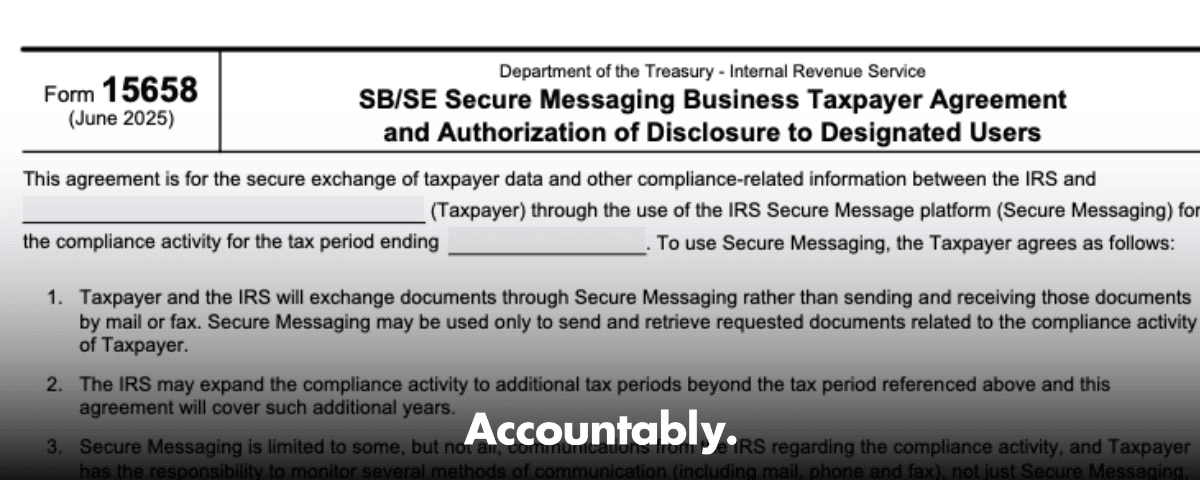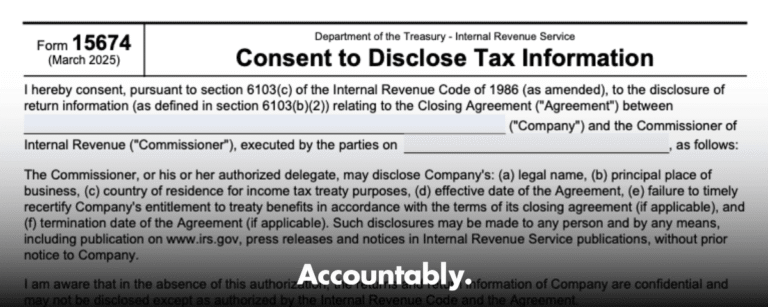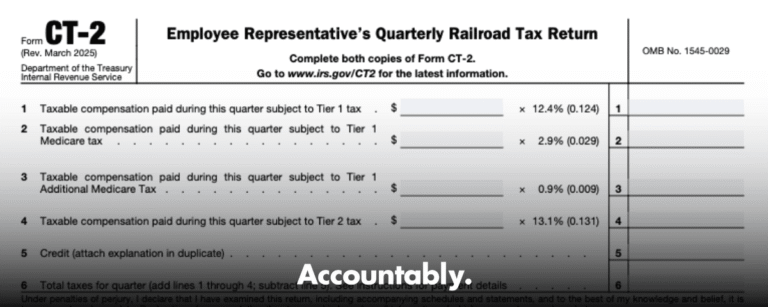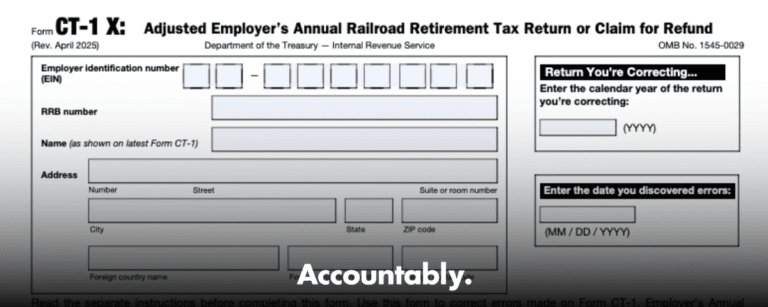Scale Your CPA Firm Without Adding Headcount
Build your offshore team that works your way, trained, compliant, and white-labeled under your firm.
👉 Book a Discovery Call
There is no California form called “Form 15658.” Section 15658 is a law in the Welfare and Institutions Code that tells counties and ombudsman programs what the written report must include, and it allows for secure online reporting. The actual statewide forms you will use are SOC 341 for most mandated reporters and SOC 342 for banks and credit unions. Once you know that, the rest gets manageable.
Key Takeaways
- “Form 15658” is not a form, it is the statute that governs what a written elder or dependent adult abuse report must contain and how counties may accept it, including via secure internet tools. The forms you actually file are SOC 341, SOC 342, and related APS forms.
- Your report must include reporter identity, victim details, the exact date, time, and place, your observations, any victim statements, witnesses, and the suspected perpetrator’s connection to the victim.
- Confidentiality is not optional. Reports are protected under Welfare and Institutions Code sections 10850, 15633, and 15633.5, with penalties for improper disclosure.
- Counties report monthly statistics to the State Department of Social Services, and long term care ombudsman programs report separately to the State Ombudsman, so do not mix those streams.
- If you work at a financial institution, use SOC 342. Most other mandated reporters use SOC 341, which CDPH also recognizes for facility reporting.
What “Form 15658” Actually Covers
Section 15658 lays out two big ideas. First, the written report must include specific fields, from who you are to what you saw. Second, a county or ombudsman program may provide a secure online tool that meets the same confidentiality rules as paper. The section also sets the statewide rhythm for data reporting, which is why counties and ombudsman programs keep their tracking separate. If you keep those guardrails in mind, you will complete the correct form and send it to the right place.
Quick mental model, “15658 is the rulebook, SOC 341 or SOC 342 are the forms in your hand.”
Hundreds of Firms Have Already Used This Framework.
Join the growing list of CPA and accounting firms using Accountably’s Offshore Playbook to scale faster.
💬 Get Your FREE Playbook
👉 Visit Jugal Thacker’s LinkedIn
Send him a connection request and message “Playbook” to get your copy.
The Required Fields At A Glance
Here is what the law expects to see in your written report, whether you submit on paper or through a county’s secure portal:
- Your name, address, phone, and occupation.
- The victim’s name and address.
- Exact date, time, and place of the incident.
- Your observations and beliefs about what happened.
- Any statements by the victim, captured as closely as possible.
- People who may have knowledge of the incident.
- The person believed responsible and their connection to the victim.
Which Form Do You Use
- SOC 341, Report of Suspected Dependent Adult or Elder Abuse, for most mandated reporters and community settings.
- SOC 342, financial abuse report, only for financial institutions and their employees.
- Some counties provide a secure online tool that mirrors the required fields, and the same privacy rules apply.
How To File, Step By Step
- advise teams to use a short, repeatable routine so no one freezes under pressure.
- Call first if someone is in immediate danger, then complete the written report
- Call 911 for emergencies.
- For non emergencies, call the statewide APS number, then enter your ZIP code to reach your county. You will still complete the written report after the call.
- Choose the right report path
- Use SOC 341 unless you are a financial institution, in which case use SOC 342. If your county offers a secure portal, you may submit online instead of paper.
- Capture the required details with care
- Write down the exact date, time, and location.
- Document what you saw and heard, not just conclusions. Include the victim’s words in quotes when you can.
- List witnesses with contact info.
- Identify the suspected perpetrator and how they know the victim.
- Attach corroboration when you lawfully can
- Add photos, notes, and medical records that you are authorized to share. Keep a clean chain of custody inside your organization.
- Use your county’s secure channel. If you upload, confirm you are on the official site or portal.
Submission Methods And Safeguards
| Method | When To Use It | Privacy Standard |
| Paper SOC 341 or SOC 342 | County requires paper or you do not have portal access | Governed by WIC 10850, 15633, 15633.5 |
| Secure county or ombudsman portal | County offers an online tool and your role allows use | Same standards as paper, purpose limited to APS use |
| Facility reporting to regulators | Long term care or health facility contexts | CDPH acknowledges SOC 341 for certain abuse reporting workflows |
The online path is allowed only if the county or ombudsman program implements it with equal or stronger confidentiality than paper. Information sent through the tool can be used only for its intended purpose.
Confidentiality, What You Can Share And With Whom
These reports carry strict privacy rules. Confidentiality in elder and dependent adult abuse reporting sits on three pillars you will see referenced over and over, WIC 10850 covers public social services records, WIC 15633 protects abuse reports and sets penalties for improper disclosure, and WIC 15633.5 defines who may receive information and when a reporter’s identity can be shared. If you handle case documents, train your team on these sections and keep access narrow.
Improve Margins Without Compromising Quality
Offshore staffing helps firms deliver more, scale faster, and stay compliant, without adding local headcount.
👉 Book a Discovery CallTreat every report like a sealed medical record. Share only with the agencies and people the law allows, and only for the right reasons.
County vs Ombudsman Reports, Do Not Mix The Streams
It helps to remember that the statute separates two pipelines. Counties submit monthly data summaries to the State Department of Social Services that include how many incidents they received, how many people were affected, the types of abuse, and what actions they took. For these statewide summaries, sexual abuse must be tracked separately from physical abuse. At the same time, long term care ombudsman programs report monthly to the Office of the State Long Term Care Ombudsman and send a copy to the county. The State Ombudsman then sends a quarterly roll up to CDSS. Keep the streams separate. If your team tries to blend ombudsman originated cases into the county’s statewide totals, your data will be rejected.
A Simple Workflow To Stay Clean
- Tag every intake as either community APS or long term care ombudsman at the start.
- Keep copies of ombudsman reports in your county record, but exclude them from the county’s monthly totals to the state.
- Reconcile monthly counts with ombudsman copies to avoid duplicate statistics.
What To Include, A Practical Checklist You Can Share With Your Team
Print this and keep it near your intake desk.
- Reporter identity, name, work title, address, phone.
- Victim identity, full name and address.
- Exact date, time, and location of the incident.
- What you saw or heard, stick to observations first.
- Victim’s words in quotes if possible.
- Witness names and how to reach them.
- Suspected perpetrator’s name and relationship to the victim.
- Attachments you can lawfully share, photos, notes, medical records, or other corroboration.
- Submission confirmation, keep your fax proof or portal receipt in the file.
SOC 341 vs SOC 342, Quick Compare
| Field | SOC 341, Most reporters | SOC 342, Financial institutions |
| When to use | Community settings, mandated reporters, health or service providers | Banks, credit unions, and certain financial employees only |
| Core content | Identity, incident details, observations, statements, witnesses, suspected perpetrator | Same core content, with a focus on financial exploitation indicators |
| Typical channel | Paper form or secure county portal | Paper form or secure county portal |
| State recognition | State APS program forms page | Listed alongside SOC 341 in APS program forms |
| Both forms are maintained by CDSS and are the statewide standard for elder and dependent adult abuse reporting. |
Common Mistakes That Slow Down Case Triage
- Missing identity fields. Leave out your phone or the victim’s address, and you should expect a callback that pushes the case to the next day.
- Vague timing. “Sometime last week” invites delay. Write the date and time you know, add a range only if needed.
- No relationship specified. Always note how the suspected perpetrator is connected to the victim.
- Mixing data streams. Do not send ombudsman originated cases in the county’s statewide counts.
- Using the wrong form. If you are not a financial institution, do not send SOC 342. Use SOC 341 unless your county portal replaces it.
Setting Expectations For Facilities
If you work in or with a licensed facility, you probably juggle multiple reporting clocks. Federal rules require very fast notification to law enforcement and the ombudsman in certain cases that involve serious injury, and California health authorities point facilities to SOC 341 for written abuse reporting. That does not replace other obligations, it just gives you a common written report format that the receiving agencies recognize. Build a written checklist that maps your federal and state timeframes to your internal steps, so your staff can act without stopping to interpret policy.
A Note On Fax Numbers
Teams sometimes paste an internet fax number they found on a forum into their checklist and call it a day. Do not do that. For example, 855 204 5020 is widely referenced online as an IRS fax line for specific federal tax correspondence, not a California APS fax. Always use the county APS intake number or portal instructions on an official county or state page. When in doubt, call your county APS office and confirm the number before sending protected details.
When you are dealing with protected information, confirm the destination every single time. A sixty second phone call beats a privacy incident.
Real World Tips From The Operations Side
- Pre build a secure template packet. Keep a current SOC 341, a one page checklist, and your county’s portal link in a shared secure folder.
- Capture quotes, then context. Write the victim’s words first, then add the observable context so a reviewer can follow the story.
- Train for handoffs. If your intake person is out, the next teammate should be able to complete and send the report within minutes, not hours.
- Log confirmations. Save portal receipts or fax confirmations in the case file, with date and time, so monthly statistics reconcile cleanly.
- Do a two minute privacy check. Ask, are we sending only what the law allows, to the right people, and through a channel that meets the rule.
How we work matters as much as what we send. The right form, the right fields, the right channel, every time.
FAQs
Is there a California “Form 15658”
Not as a form number. Section 15658 is a statute that lists required report elements, allows secure online reporting, and sets monthly data reporting to the state. The forms you actually use are SOC 341 and SOC 342.
Which form should I use as a mandated reporter
If you are not a financial institution, use SOC 341. If you are reporting as a bank or credit union employee, use SOC 342. Some counties also offer a secure portal that mirrors these forms.
What must my written report include
Your contact details and role, the victim’s name and address, date, time, and location, your observations, the victim’s statements, witness names, and the suspected perpetrator’s name and relationship to the victim.
Can I file online instead of mailing or faxing
Yes, if your county or ombudsman program offers a secure online tool that meets the same confidentiality standards as paper. The information can be used only for its intended purpose. Check your county APS page for availability.
Who sees my report and is my identity confidential
The law limits disclosure to specific agencies and investigators involved in the case, and it protects reporter identity with narrow exceptions. Violations can carry misdemeanor penalties.
How do counties and ombudsman programs report statistics
Counties send monthly totals to CDSS, excluding ombudsman originated reports. Ombudsman programs send monthly reports to the State Ombudsman and a copy to the county, and the state program compiles a quarterly summary for CDSS.
One Page Reference, What You Send And Where
| You are | Use this | Send it through | Keep in mind |
| Community mandated reporter | SOC 341 | County APS address, fax, or portal | Fill every field, attach lawful proof, save confirmation |
| Bank or credit union staff | SOC 342 | County APS address, fax, or portal | Focus on financial exploitation indicators |
| Licensed facility staff | SOC 341 for abuse reporting workflows | Facility policy plus required regulator notifications | Federal timeframes may be shorter for serious injuries |
The statewide APS forms page lists SOC 341, SOC 342, SOC 341A, and SOC 343. If your county has a portal, it will ask for the same fields.
A Short Word On Process Discipline
You already run a busy operation, maybe a clinic, a community program, or a compliance team inside a larger organization. The work here is detailed and time sensitive, so a little structure pays off. Keep SOPs for intake, standardize filenames, and use version control so reviewers can follow the trail. That way, when a report leaves your desk, it reads clean, complete, and easy to audit.
If you work with outside partners, expect the same discipline. At Accountably, we obsess over documentation clarity, file naming, and review checklists for regulated reports, because they cut review time and prevent rework. The same habits help your APS reporting run smoothly. Mentioning this here is not about selling you anything, it is about building a repeatable process that protects people and keeps your team steady.
Final Checklist Before You Hit Submit
- Right form chosen, SOC 341 or SOC 342.
- All required fields complete, no blanks that trigger callbacks.
- Victim statements quoted, your observations clear and factual.
- Witnesses and suspected perpetrator identified with relationships.
- Attachments lawful to share and relevant to the incident.
- Submission method verified as official, address, fax, or portal.
- Privacy check against WIC 10850, 15633, 15633.5.
- Confirmation saved to the file for monthly reconciliation.
You protect people when you file quickly and precisely. The law gives you the checklist. Your process turns it into action.
Sources And Freshness
This guide reflects California law and state program pages reviewed on October 30, 2025. We relied on WIC §15658 for required fields and online reporting, WIC §§10850, 15633, and 15633.5 for confidentiality, and CDSS APS forms for SOC 341 and SOC 342. For facility workflows, we noted CDPH guidance referencing SOC 341. We also verified that the widely circulated 855 204 5020 fax line belongs to the IRS, not CDSS. Always check your county APS page for its current portal or fax details.
Simplify Delivery, Improve Margins, Stay in Control.
Offshore support that works exactly like your in-house team.
💼 Let’s Talk







